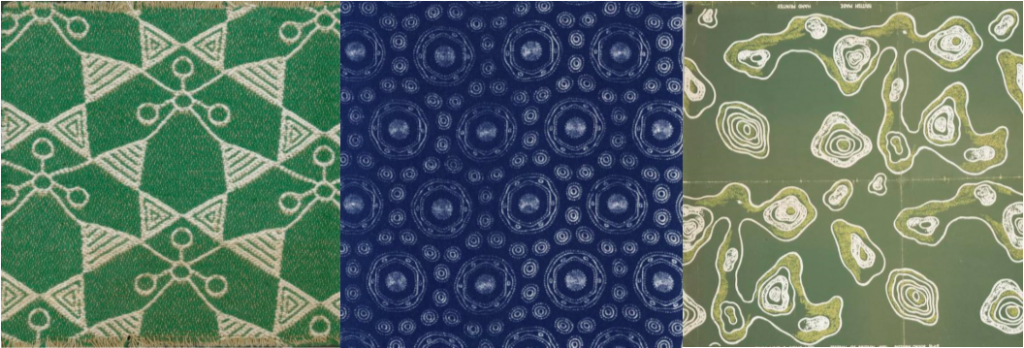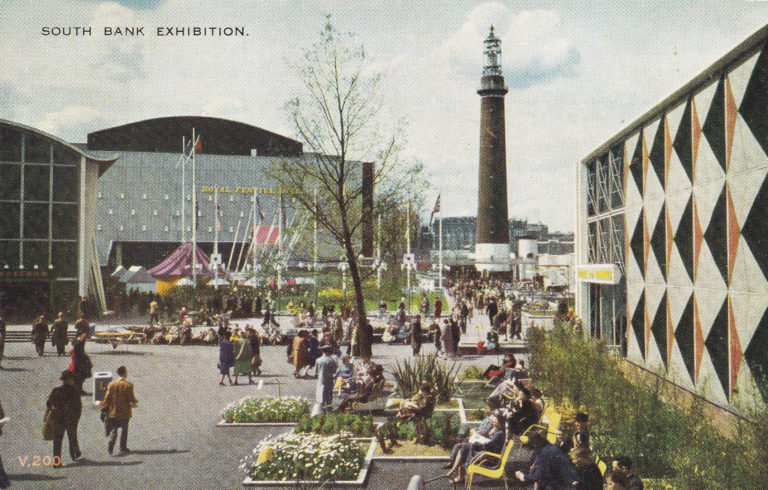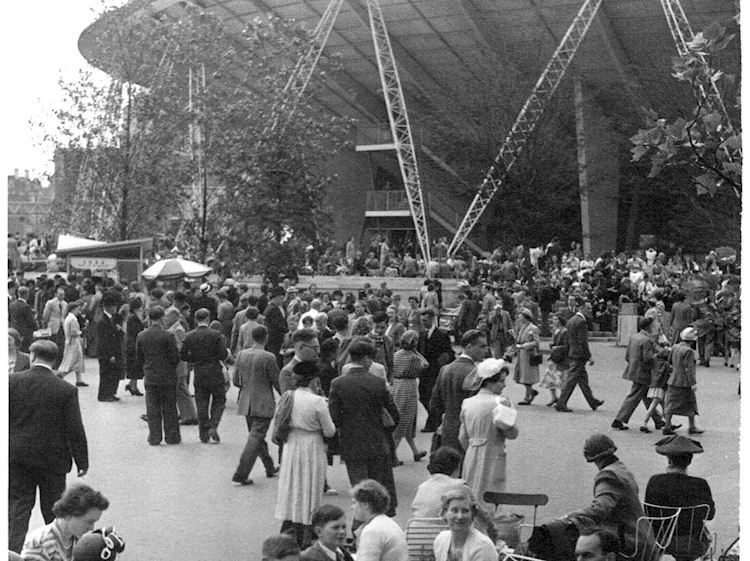The Festival of Britain was a celebration of the end of the post-war financial retrenchment and focused on achievements in British arts and sciences, showcasing the nation’s efforts in mapping the heavens, exploring the globe and investigating the structure and nature of the universe.

The visual rhetoric of the Festival continued an ongoing interest in the use of scientific motifs in ornamental patterns and design that was emerging from a post-war enthusiasm for science to help build a better world for all citizens. X-ray crystallography, pioneered by British male and female scientists, presented an opportunity to bring together art and science to promote British industry and celebrate British achievement.
X-ray crystallography is an imaging technique that unravels the structure of matter at the atomic level. It flourished in the inter-war period and is still an important part of scientific research today.
The molecular structure of a crystalline sample can be established by carefully mapping the diffraction of X-rays as they pass through it. The technique was fundamental to the discovery of the structure of many significant molecules, including DNA, penicillin, and insulin in the twentieth century.
“For the first-time textile designers have found their inspiration in a world that the eye cannot see, the world of the atom and the molecule. For the first time, their prompters have been the people of science.”
‘The Design Story of the Century’, British Textiles, April 1951

Historians have spent much time researching the exhibitions at the Festival of Britain that saw a huge range of materials, ideas, designs, and concepts brought together at sites across the capital. The chemistry collection at the Science Museum contains a series of textile design prints that were commissioned by the Festival Pattern Group from patterns of X-ray crystallography, focusing on the work of Dr Helen Megaw.
Dr Helen Megaw (1 Jun 1907 – 26 Feb 2002) was appointed to the Cavendish Laboratory in Cambridge in 1946 and focused her career on inorganic molecules. Pioneering efforts in the understanding of hydrogen bonding in metals, establishing structures for ice, Megaw also published the definitive text on ferroelectrics.
In 1946, Megaw wrote to Marcus Brumwell, director of the Design Research Unit, and suggested that the wallpaper and fabric designers at the Unit might be inspired by the patterns that ‘crop-up’ in her work. Megaw had been ‘impressed by the beauty of designs’ that came from attempts towards ‘clarity and accuracy’.

By 1951, Megaw was a consultant to the Festival Pattern Group and provided a series of crystal structure diagrams that were used in the designs for textiles, wallpaper, window glass, ashtrays, and a tea set used throughout the Festival. But the collaboration did not always go smoothly, differing creative processes of scientists and designers had to accommodate scientific legitimacy and artistic conventions simultaneously as they grappled with the question of how scientific knowledge of the newly emerging molecular world could, or should, be represented.
‘It is legitimate to show only those features of the map which one desires to emphasize for a given purpose; but it is not legitimate to change their positions. Or to put in things which are not there…’
Helen Megaw, Notes of the Crystal Structure Diagrams for the Festival Pattern Group, 12 Jan 1950.

Was it appropriate for the designers to move molecules at the cost of scientific accuracy? Why use the results of X-ray crystallographer’s work in the first place? Could the pattern retain the name of the molecule it was taken from, as the Festival Design Group intended? Did the design also lose something in the distortion of scientific truth?
All these questions continue today as scientists and artists collaborate and the Science Museum’s collection of science-inspired design objects from the Festival of Britain help us to inspire artists and scientists alike.
Full details of the textile design prints commissioned by the Festival Pattern Group from patterns from X-ray crystallography and held in the Science Museum collection can be found here.
2 comments on “The Festival of Britain – a meeting of science and art”
Comments are closed.